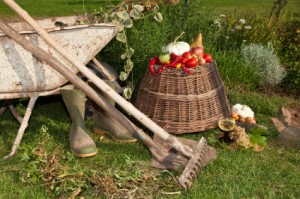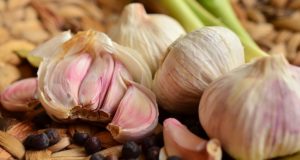 Is it better to prepare your garden for winter, “putting it to bed” for the cold months before beginning rigorous efforts in spring? Or is it possible that winter gardening crops have merit during the cold months, benefiting your garden and family alike? Is one better than the other for your soil, garden, and plants? Should either be avoided? There are several aspects of these methods to take into consideration, so lets take a look at each one, and then you can decide for yourself which is best for you.
Is it better to prepare your garden for winter, “putting it to bed” for the cold months before beginning rigorous efforts in spring? Or is it possible that winter gardening crops have merit during the cold months, benefiting your garden and family alike? Is one better than the other for your soil, garden, and plants? Should either be avoided? There are several aspects of these methods to take into consideration, so lets take a look at each one, and then you can decide for yourself which is best for you.
Pros and Cons of Winter Gardening
Planting for fall or winter gardens can be rewarding, and it certainly has its practical merits. For those in warmer growing zones, there may be a greater variety of plants for growing; those in cooler climates have to stick to vegetation that is hardy enough to survive cold temperatures and sometimes severe frosts. While there are certain limitations for those in shorter growing season, this isn’t necessarily a hindrance worthy of avoiding a winter garden. The use of row covers and other various protection methods, even making your own greenhouse, can greatly extend the growing season and the plant variety you can choose from for these colder zones.
Taking some extra time to research your climate as well as the plants that you want to grow during the winter will equip you to give your soil what it needs to maintain a strong, nutrient balance. All plants both give and take different nutrients to and from the soil, so finding a winter plant that compliments the summer plant in the same section of soil can help regenerate the garden, assisting in the renewal of balance in the natural composition.
In addition, growing a winter garden will greatly reduce the weeds that germinate in the late fall and sprout in the spring. Winter planting will also help your soil retain moisture throughout the drier winter months.
If your family relies upon the produce from your garden, winter gardening can also be a fantastic tool in maintaining fresh produce all year long. For cooler climates, winter gardens may not last the entire winter through, but with the aids of season-extending tools, gardens should last well into the freezing months. For those in warmer climates, it is quite possible to have produce yields every day of the year, which can significantly reduce your grocery bill.
While there are many positives about planting a winter garden, there can be some drawbacks as well. More mulch and compost are required for year-round gardening. Not only will you want to fully replenish your soil before planting your fall and winter crops, you will want to do so again after their harvest and prior to spring sowing. Depending upon your composting or fertilizing methods, this has the potential to become costly.
Unless you live in a significantly warmer growing zone with the first frost late in the fall, to successfully grow a winter garden, you will need to invest in at least one means of protection for your plants against the cold and frost. While this investment can be a hefty out-of-pocket expense (whether you build or purchase already-made) these tools can last for many seasons and prove invaluable to avid gardeners.
New Survival Seed Bank™ Lets You Plant A Full Acre Crisis Garden!
Pros and Cons of Winter Fallow
Letting your garden soil fallow for the winter also has its merits. Often times, people like to focus their attention in the cold months on school, hunting, sports, holidays, and baking. Fallowing is ideal for those who have busy schedules during the colder months and are unable to spend the extra time in the garden. As far as the garden itself is concerned, letting the soil fallow for the season will give it a break to regain a natural balance of nitrogen and nutrients after the fall harvest. A generous helping of mulch and compost over cultivated soil will aid in this while also helping to retain the moisture of the soil and reduce the weeds that will need to be disposed of in the spring.
As an alternative, planting low maintenance cover crops, such as rye or cereal crops, will boost your garden against weather and wind erosion, while improving your soil’s composition quality. This will also reduce the amount of weed growth and moisture loss from the soil. In addition, research by Purdue University has shown that vegetation planted after cover crops yield a higher amount of produce. Because most cover crops are comprised of plants that do not require much effort on the part of the planter, these are ideal for those who do not wish to put a lot of time and energy into a winter garden, but want to reap the benefits of having some growth within the soil during those months.
While fallowing has some potential winning factors, it also has some negative effects. Leaving your garden empty throughout the winter (with neither a winter garden or a cover crop) can result in extensive weed growth. Consequently, it can result in a greater amount of work in the springtime to reestablish the soil and beds of your garden from erosion and weed growth.
What Is Best For Your Garden?
There is much to take into consideration when you’re determining which course of action is better for you and your garden. In addition to giving allowance for your climate zone and the tools you will need to extend the growing season and make winter gardening an option for you, it is also vital to consider how much time you have available for tending a winter garden. Ultimately the determining factors for the best method are personal and individual and will differ from family to family. Understanding your climate, the vegetation you want to plant, and your individual goals will go far in helping you determine what to do with your garden in the cold months.
 Off The Grid News Better Ideas For Off The Grid Living
Off The Grid News Better Ideas For Off The Grid Living




